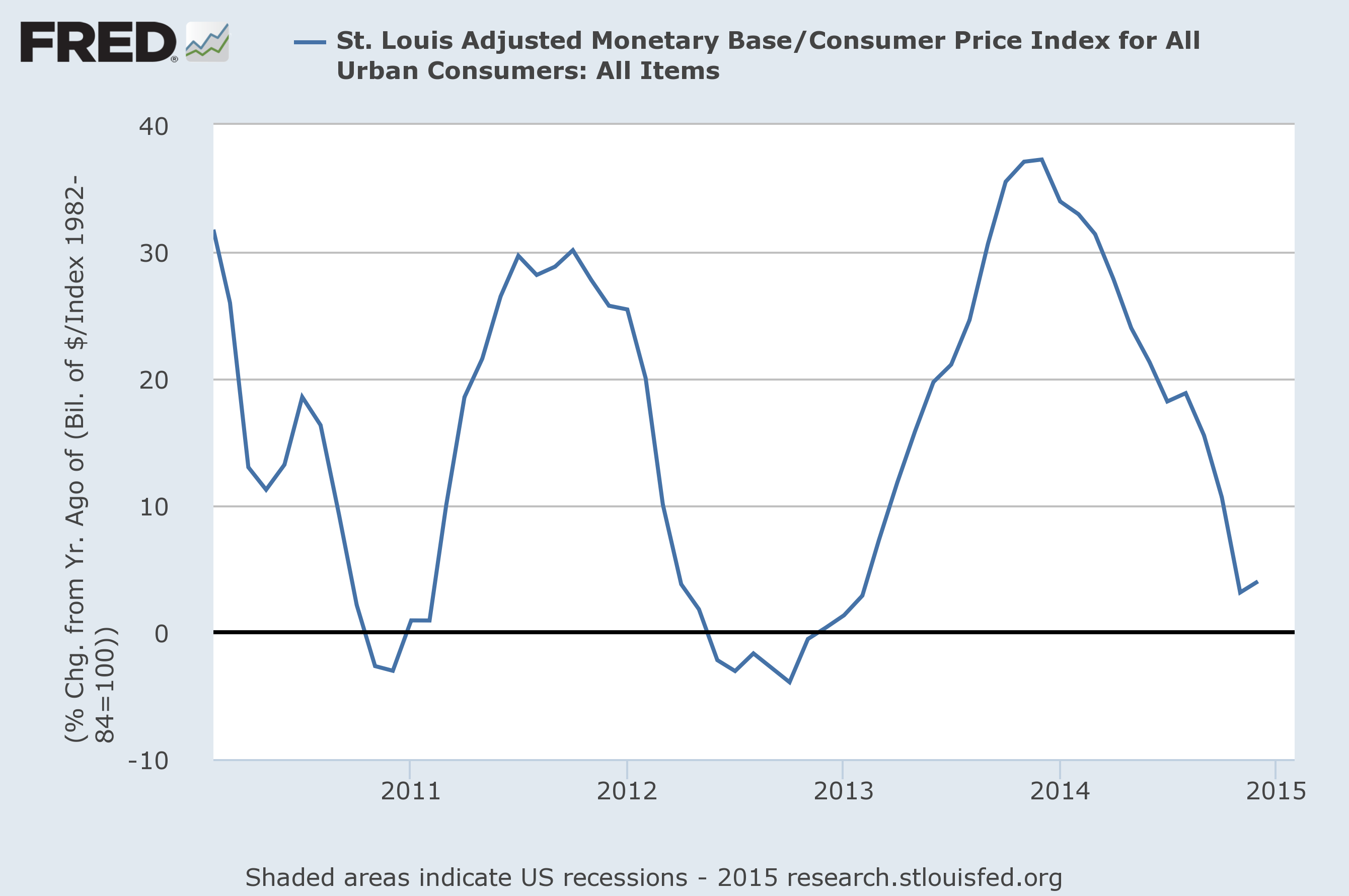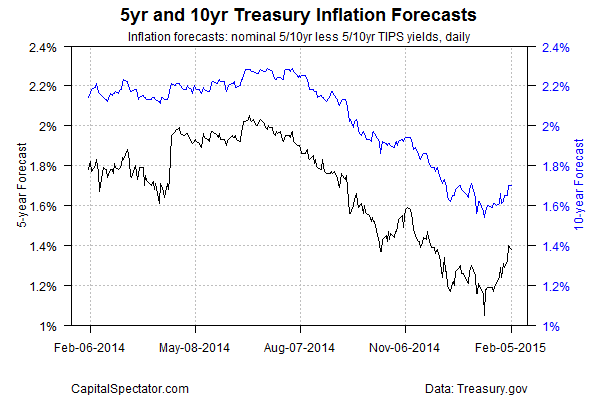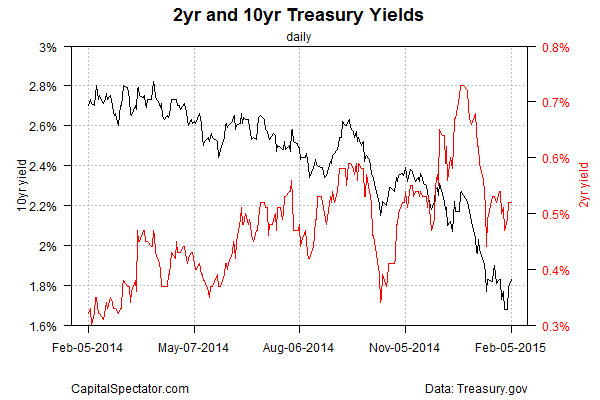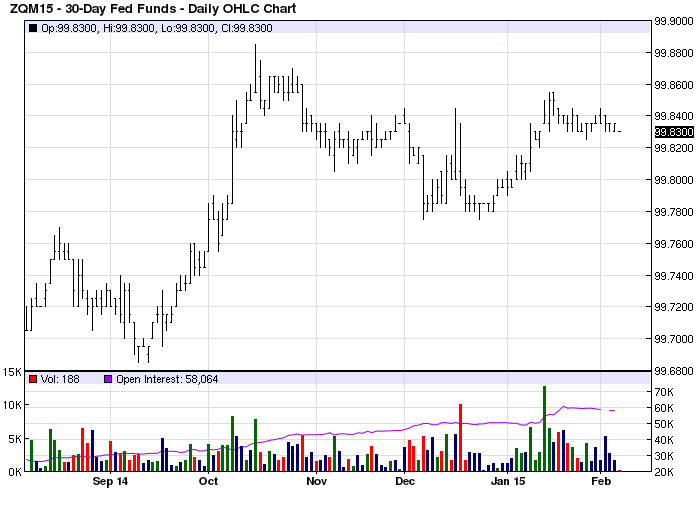Warren Buffett has his doubts, and so do plenty of other analysts. Weak economic activity overseas is arguably a factor that could delay the onset of US tightening. Based on the domestic trend, however, the case for raising rates soon is compelling, according to Cleveland Fed President Loretta Mester, who said earlier this week that “if incoming economic information supports my forecast, I would be comfortable with liftoff in the first half of this year.”
Judging by the ongoing fade in the year-over-year change in the real monetary base, the Fed seems to be laying the groundwork for a round of tightening in the near-term future. The St. Louis Adjusted Monetary Base (deflated by the consumer price index) advanced just 4.0% in the year through December 2014, a world below the 37% surge that we saw at the end of 2013.
It’s also interesting to note that the market’s inflation expectations have recently ticked up, albeit after months of trending lower. It’s anyone’s guess if the crowd will continue to price in higher inflation in the weeks and months to come, but at the moment we’re seeing something we haven’t seen in a quite a while: a sustained increase in the Treasury market’s outlook for future pricing pressure. The Treasury’s implied estimate, based on the yield spread for the five-year nominal Treasury less its inflation-indexed counterpart, recently jumped to around 1.4%. That’s still quite low—and far below the roughly 2% level that prevailed as recently as last summer. But the recent bounce off of the 1.05% level from last month marks a break with the months-long trend lower.
It’s also notable that that the 2-year Treasury yield–said to be the most sensitive spot on the yield curve for rate expectations—has stabilized recently around the 0.5% level. Despite the recent volatility in this yield lately, an upward bias can be detected here in terms of recent history.
Measured by the June Fed Funds Futures contract, however, it’s still tough to make a strong case that the market’s pricing in a rate hike at this year’s midway point. Indeed, when you strip out all the noise, the market’s outlook via this contract hasn’t changed much from last November. In other words, a roughly 0.25% Fed funds rate, which is the current rate, is still the crowd’s bet for June. If you look further out in time via this year’s December’s contract, the market’s pricing in Fed fund futures at close to 0.50%.
But December’s a long way off and a lot can happen between now and Christmas. Yes, interest rates will rise… eventually, but the guessing game of when remains highly speculative.
The incoming data will, of course, have the final say, starting with today’s jobs report from Washington. There’s a good case for assuming that payrolls will deliver another solid advance in today’s January report. If so, the case will strengthen a bit for expecting a rate hike in the foreseeable future.
What could derail the glide path to higher rates? There are any number of possible answers, including some that are linked to geopolitical risk. Perhaps the first question in the dark art of divining the outlook for rates at the moment relates to the mindset of Mr. Putin.




On Loretta:
https://thefaintofheart.wordpress.com/2015/02/05/sitting-in-confortable-perks/